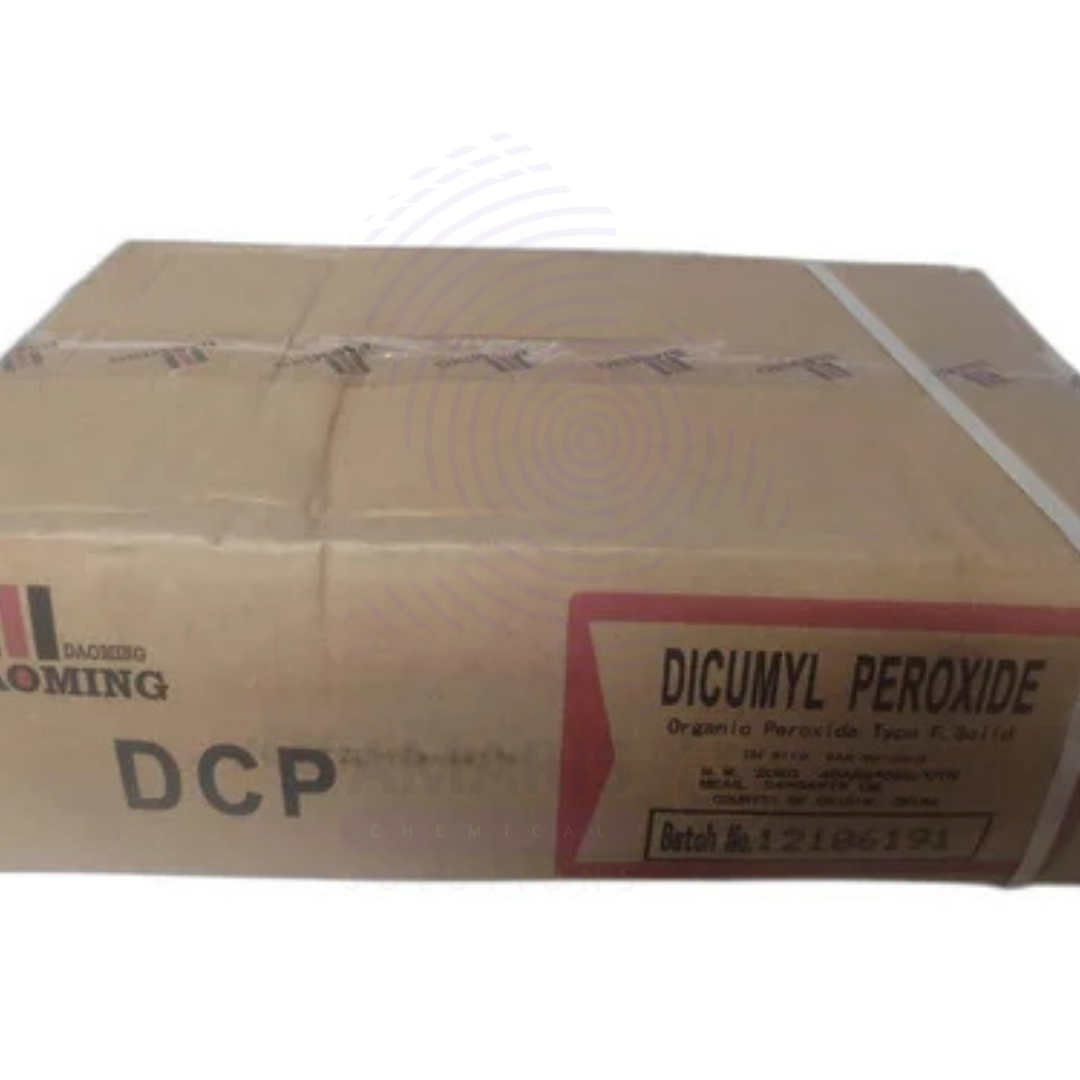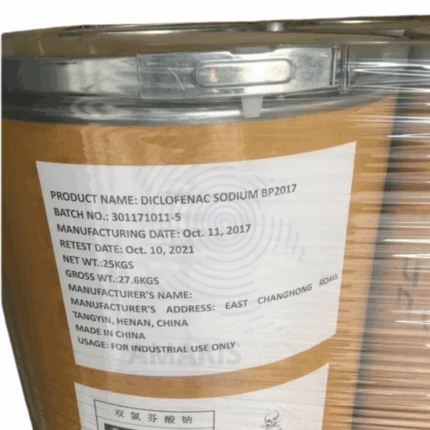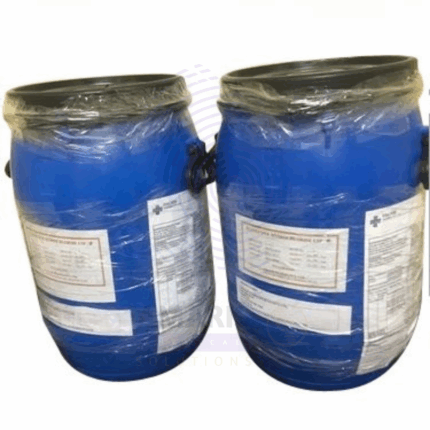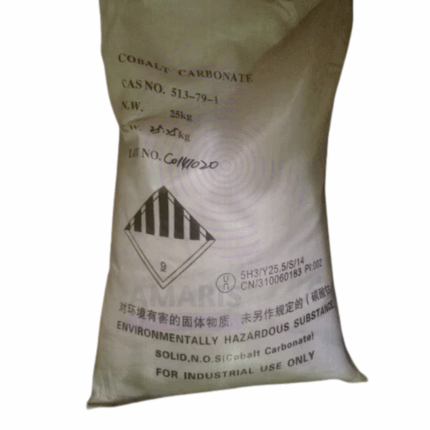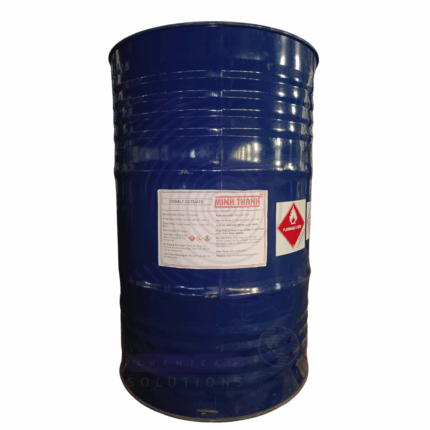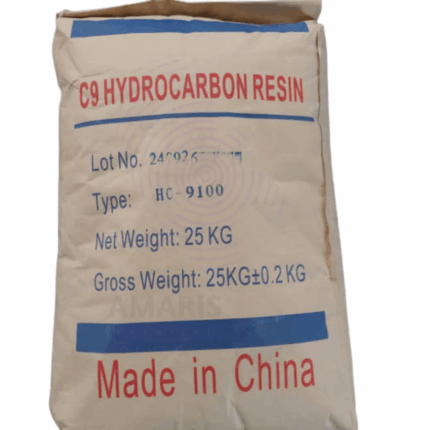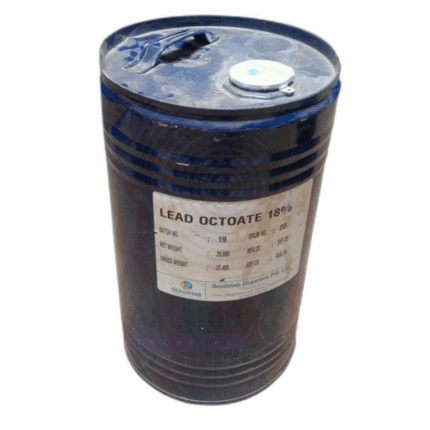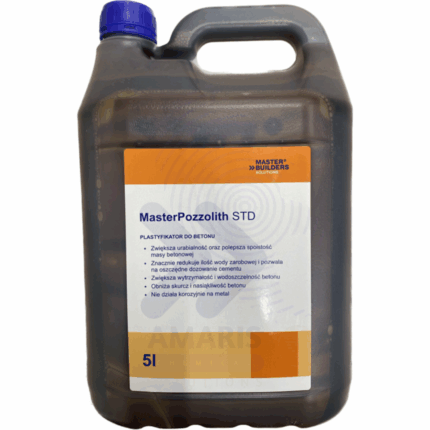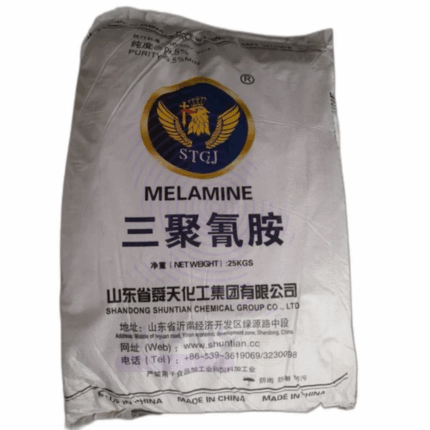Dicumyl Peroxide
Dicumyl Peroxide (DCP) is a widely used organic peroxide with powerful free radical initiator properties. It appears as a white crystalline solid with a characteristic odor and is primarily employed as a cross-linking agent and polymerization initiator in the plastics and rubber industries. Due to its ability to generate free radicals upon thermal decomposition, it facilitates curing and cross-linking of polymers, improving mechanical properties and heat resistance. Dicumyl Peroxide is a key component in manufacturing processes for polyethylene, polypropylene, EPDM rubber, and other elastomers.
Dicumyl Peroxide
Primary Uses
Polymer Cross-Linking & Curing Agent
- Rubber Industry: Used extensively to cross-link EPDM, polyethylene, and other elastomers, enhancing tensile strength, elasticity, and thermal stability of rubber products.
- Plastic Industry: Initiates polymerization and cross-linking in polyethylene and polypropylene, improving chemical resistance and mechanical durability of plastics.
- Cable & Wire Industry: Utilized in insulation and jacketing materials for wires and cables to enhance heat resistance and mechanical integrity.
Polymerization Initiator
- Employed as a free radical initiator in the synthesis of polymers and copolymers, especially for manufacturing polyethylene and polypropylene with specific properties.
Manufacture of Foams & Thermosets
- Used in production of polyethylene foams, hot melt adhesives, and thermosetting plastics to control curing and polymer network formation.
Secondary Uses
Adhesives & Sealants
- Facilitates curing and hardening in specialty adhesives and sealant formulations, especially those requiring thermal curing.
- Coatings Industry
- Acts as a curing agent in powder coatings and specialty coatings to improve durability and chemical resistance.
Composite Materials
- Used in polymer composite manufacturing for enhanced cross-linking and mechanical performance.
Laboratory & Research Applications
- Applied as a radical initiator in experimental polymerization and organic synthesis studies.
- Basic Identification Attributes
- Chemical Name (IUPAC): 2,2'-Azobis(2-methylpropionitrile) alternative name; but actually: 2,2-Dimethyl-1,3-peroxyphenylpropane (Dicumyl Peroxide)
- Common/Trade Name: Dicumyl Peroxide (DCP)
- CAS Number: 80-43-3
- HS Code: 2916.31.00
- Molecular Formula: C18H22O2
- Synonyms:
- Dicumyl Peroxide
- DCP
- 2,2'-Di(phenylmethyl)peroxide
- Physical & Chemical Properties
- Physical State: White crystalline solid or powder
- Melting Point: Approx. 39–43°C
- Boiling Point: Decomposes before boiling
- Solubility: Insoluble in water; soluble in organic solvents such as benzene, toluene
- Stability: Stable under cool, dry storage; decomposes violently on heating above 150°C releasing oxygen and free radicals
- Safety & Hazard Attributes
- Hazard Class (GHS): Explosive organic peroxide; fire and explosion hazard
- Reactivity: Highly reactive, especially under heat or contamination
- Toxicity: Harmful if inhaled or ingested; irritant to skin and eyes
- Exposure Limits: Strict occupational exposure limits apply
- Storage & Handling Attributes
- Storage Conditions: Store in a cool (<30°C), dry, well-ventilated area away from direct sunlight and incompatible materials
- Container Type: Use original sealed containers made of suitable materials
- Shelf Life: Typically 6–12 months under ideal storage
- Handling Precautions: Avoid friction, shock, heat, and contamination; use PPE
- Regulatory & Compliance Attributes
- Classified as hazardous under most transportation regulations
- Subject to strict handling, storage, and disposal regulations due to explosive potential
- Environmental & Health Impact
- Ecotoxicity: Harmful to aquatic organisms; avoid environmental release
- Persistence: May degrade in environment but with caution due to toxicity
- Bioaccumulation: Not expected
- Carcinogenicity/Mutagenicity: Not classified as carcinogenic
Safety Handling Precautions
- PPE Required:
- Flame-resistant lab coat or protective clothing
- Chemical-resistant gloves
- Safety goggles or face shield
- Respiratory protection if dust or fumes generated
- Handling Guidelines:
- Minimize exposure to heat, sparks, and static electricity
- Use explosion-proof equipment and grounding
- Avoid contamination with metals, accelerators, or reducing agents
First Aid Measures
- Inhalation: Move to fresh air immediately; seek medical help if symptoms develop
- Skin Contact: Wash affected area thoroughly with water and soap; seek medical attention if irritation persists
- Eye Contact: Rinse with plenty of water for at least 15 minutes; get medical attention
- Ingestion: Do not induce vomiting; seek emergency medical care
Firefighting Measures
- Fire Hazards: Highly combustible and explosive under heat or contamination
- Extinguishing Media: Use foam, dry chemical powder, or carbon dioxide; do not use water jets directly
- Special Precautions: Evacuate area; wear full protective gear including self-contained breathing apparatus
- Decomposition Products: Carbon dioxide, carbon monoxide, phenolic compounds, and other toxic gases


 Preservatives(food)
Preservatives(food) Flavor Enhancers
Flavor Enhancers Acidulants
Acidulants Sweeteners
Sweeteners Antioxidants
Antioxidants Colorants(food)
Colorants(food) Nutraceutical Ingredients (food)
Nutraceutical Ingredients (food) Nutrient Supplements
Nutrient Supplements Emulsifiers
Emulsifiers
 Collectors
Collectors Dust Suppressants
Dust Suppressants Explosives and Blasting Agents
Explosives and Blasting Agents Flocculants and Coagulants
Flocculants and Coagulants Frothers
Frothers Leaching Agents
Leaching Agents pH Modifiers
pH Modifiers Precious Metal Extraction Agents
Precious Metal Extraction Agents
 Antioxidants(plastic)
Antioxidants(plastic) Colorants (Pigments, Dyes)
Colorants (Pigments, Dyes) Fillers and Reinforcements
Fillers and Reinforcements Flame Retardants
Flame Retardants Monomers
Monomers Plasticizers
Plasticizers Polymerization Initiators
Polymerization Initiators Stabilizers (UV, Heat)
Stabilizers (UV, Heat)
 Antifoaming Agents
Antifoaming Agents Chelating Agents
Chelating Agents Coagulants and Flocculants
Coagulants and Flocculants Corrosion Inhibitors
Corrosion Inhibitors Disinfectants and Biocides
Disinfectants and Biocides Oxidizing Agents
Oxidizing Agents pH Adjusters
pH Adjusters Scale Inhibitors( water)
Scale Inhibitors( water)
 Antioxidants(cosmetic)
Antioxidants(cosmetic) Emollients
Emollients Fragrances and Essential Oils
Fragrances and Essential Oils Humectants
Humectants Preservatives
Preservatives Surfactants(cosmetic)
Surfactants(cosmetic) Thickeners
Thickeners UV Filters
UV Filters
 Fertilizers
Fertilizers Soil Conditioners
Soil Conditioners Plant Growth Regulators
Plant Growth Regulators Animal Feed Additives
Animal Feed Additives Biostimulants
Biostimulants Pesticides (Herbicides, Insecticides, Fungicides)
Pesticides (Herbicides, Insecticides, Fungicides)
 Active Pharmaceutical Ingredients (APIs)
Active Pharmaceutical Ingredients (APIs) Excipients
Excipients Solvents(pharmaceutical)
Solvents(pharmaceutical) Antibiotics
Antibiotics Antiseptics and Disinfectants
Antiseptics and Disinfectants Vaccine Adjuvants
Vaccine Adjuvants Nutraceutical Ingredients (pharmaceutical)
Nutraceutical Ingredients (pharmaceutical) Analgesics & Antipyretics
Analgesics & Antipyretics
 Analytical Reagents
Analytical Reagents Solvents(lab)
Solvents(lab) Chromatography Chemicals
Chromatography Chemicals Spectroscopy Reagents
Spectroscopy Reagents microbiology-and-cell-culture-reagents
microbiology-and-cell-culture-reagents Molecular Biology Reagents
Molecular Biology Reagents Biochemical Reagents
Biochemical Reagents Inorganic and Organic Standards
Inorganic and Organic Standards Laboratory Safety Chemicals
Laboratory Safety Chemicals Specialty Laboratory Chemicals(Special Laboratory Equipment)
Specialty Laboratory Chemicals(Special Laboratory Equipment)
 Demulsifiers
Demulsifiers Hydraulic Fracturing Fluids
Hydraulic Fracturing Fluids Scale Inhibitors(oil)
Scale Inhibitors(oil) Surfactants(oil)
Surfactants(oil) Drilling Fluids
Drilling Fluids
 Dyes and Pigments
Dyes and Pigments Bleaching Agents
Bleaching Agents Softening Agents
Softening Agents Finishing Agents
Finishing Agents Antistatic Agents
Antistatic Agents
 Admixtures
Admixtures Waterproofing Agents
Waterproofing Agents Sealants and Adhesives
Sealants and Adhesives Curing Compounds
Curing Compounds Concrete Repair Chemicals
Concrete Repair Chemicals Anti-Corrosion Coatings
Anti-Corrosion Coatings
 Surfactants(cleaning)
Surfactants(cleaning) Builders
Builders Enzymes
Enzymes Solvents (Cleaning)
Solvents (Cleaning) Fragrances
Fragrances
 Electronic Chemicals
Electronic Chemicals Catalysts
Catalysts Lubricants
Lubricants Photographic Chemicals
Photographic Chemicals Refrigerants
Refrigerants Automotive chemicals
Automotive chemicals Pyrotechnic Chemicals
Pyrotechnic Chemicals
 Biodegradable Surfactants
Biodegradable Surfactants Bio-based Solvents
Bio-based Solvents Renewable Polymers
Renewable Polymers Carbon Capture Chemicals
Carbon Capture Chemicals Wastewater Treatment Chemicals
Wastewater Treatment Chemicals
 Pigments
Pigments Solvents(paint)
Solvents(paint) Specialty Coatings
Specialty Coatings Binders/Resins
Binders/Resins Additives
Additives Driers
Driers Anti-Corrosion Agents
Anti-Corrosion Agents Functional Coatings
Functional Coatings Application-Specific Coatings
Application-Specific Coatings
 Fresh Herbs
Fresh Herbs Ground Spices
Ground Spices Whole Spices
Whole Spices Spice Blends
Spice Blends Dried Herbs
Dried Herbs
 Leavening Agents
Leavening Agents Dough Conditioners
Dough Conditioners Flour Treatments
Flour Treatments Fat Replacers
Fat Replacers Decoratives
Decoratives Preservatives(baking)
Preservatives(baking)
 Plasticizers & Softeners
Plasticizers & Softeners Reinforcing Agents
Reinforcing Agents Adhesion Promoters
Adhesion Promoters Vulcanizing Agents
Vulcanizing Agents Antidegradants
Antidegradants Blowing Agents
Blowing Agents Fillers & Extenders
Fillers & Extenders Accelerators & Retarders
Accelerators & Retarders